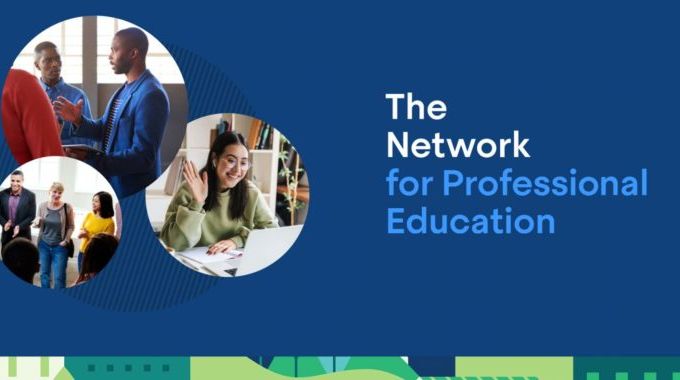Promising Practices In Teaching Public Health
While the country was in the midst of a long-overdue racial reckoning in higher education, the past year and a half also brought the most profound disruption to education in history. And alongside the pandemic, there has been a tremendous uptick in interest in public health. This creates an opportunity, perhaps like no other, for academic public health to lead radical transformation in teaching and learning. As we look toward the fall 2021 and beyond, we must redirect our efforts. I suggest promising practices in three priority areas: 1. Inclusive excellence, 2. Flexible, technology-enhanced teaching and learning options, and 3. The human side of teaching and learning.
Alongside the pandemic, there has been a tremendous uptick in interest in public health. This creates an opportunity, perhaps like no other, for academic public health to lead radical transformation in teaching and learning.
Inclusive Excellence
Inclusive excellence requires establishing learning environments that enable all students to reach their academic potential. These are positive, supportive and challenging learning spaces where all students are valued and have access to resources they need to be successful. Inclusive excellence does not mean lowering educational standards, it actually translates to a higher bar for all students. To get there, we must challenge existing norms and practices and be far more intentional in course design and delivery including more diversity of topics, perspectives, and speakers. Most importantly, we must hold ourselves accountable in supporting these environments.
Educational Technology
Flexible, technology-enhanced teaching and learning options can improve access to educational opportunities, accommodate the needs of different kinds of learners, promote deeper learning and engagement, and position us well for future disruptions. This past year and a half, faculty used a range of educational technologies to deliver content, to promote active learning, and to engage and connect with students. Faculty recorded and shared class sessions for students to view or review at their own pace, and held virtual office hours and advising sessions. Backchannel communication tools allowed students to engage, even those who might not feel comfortable doing so in a traditional, classroom environment.
Flexible, technology-enhanced teaching and learning options can improve access to educational opportunities, accommodate the needs of different kinds of learners, promote deeper learning and engagement, and position us well for future disruptions.
Educational and other technologies are also essential for student support, co-curricular activities and community-building. Options for virtual tutoring, extra help sessions, academic and career advising sessions offer flexibility for faculty, staff and students alike. As we consider these promising practices for fall, we must not lose sight of the digital divide, exposed and worsened by the pandemic, and the requisite access and resources that all students need to fully engage in their learning.
Human Connection
The human elements of teaching and learning such as compassion, humility, vulnerability, and caring, have never been more important. As we transitioned our teaching to fully remote and then to hybrid-flexible Learn from Anywhere, faculty, staff and students were challenged in so many ways. Each of us had a choice to make – give it our best shot or walk away. I am not aware of anyone who walked. In fact, faculty, staff and students engaged more fully and authentically, despite the many personal and professional challenges they faced.
At the School of Public Health (SPH), I have the privilege to work alongside so many excellent faculty and staff, who went above and beyond this past year to support students, and each other in every way. Specifically in teaching, faculty were flexible, understanding, and compassionate. In March of 2020, we implemented regular teaching and learning sessions at SPH for faculty and staff. We shared challenges, ideas, what we just learned in Zoom, what we needed to learn to do in Zoom (immediately!), and so much more. We upended what had been a very isolating experience of teaching into a community enterprise. These conversations will surely continue as we, together, hold ourselves and each other accountable to establish learning environments that enable all students to reach their academic potential, continue to develop and hone flexible, technology-enhanced educational opportunities and support each other in our teaching.
The School of Public Health hosts regular convenings to discuss contemporary issues in teaching. Video archives of our 2018 program on Teaching Public Health, our 2020 program on Teaching Public Health: Diversity, Inclusion, Equity and Justice and our 2021 program on Teaching Public Health: Transformative Educational Models are available online.
 About the Author: Lisa Sullivan is Associate Dean for Education, Professor and former Chair of Biostatistics at the Boston University School of Public Health. In 2000, she was awarded the Norman A. Scotch Award for Excellence in Teaching, and in 2001, she was awarded the prestigious Metcalf Award for Excellence in Teaching at BU.
About the Author: Lisa Sullivan is Associate Dean for Education, Professor and former Chair of Biostatistics at the Boston University School of Public Health. In 2000, she was awarded the Norman A. Scotch Award for Excellence in Teaching, and in 2001, she was awarded the prestigious Metcalf Award for Excellence in Teaching at BU.



